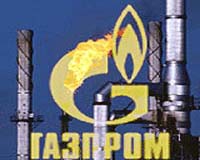 |
Baghdad (UPI) May 11, 2011 Iraq has boosted oil production to the highest level in a decade and is preparing to auction off oil and gas exploration contracts to develop potentially big new fields, part of its accelerating drive to challenge Saudi Arabia as the world's top producer. The auction, scheduled for January 2012, will involve 12 exploration blocks covering 31,500 square miles. The focus will be on opening up the country's underdeveloped gas production and bringing in new oil fields to boost reserves of 143 billion barrels to replace steadily rising output. The contracts to be awarded to international companies will differ from those issued for 15 oil and gas blocks in three previous auctions following the overthrow of Saddam Hussein's dictatorship in March 2003. These were 20-year production contracts, under which the companies developed existing, long-neglected fields to boost production for a share of the output at a fixed price. The exploration contracts with the Oil Ministry will be based on technical services, with companies receiving a flat fee rather than a share of the production. Because Iraq's current oil reserves are easy to tap because of favorable geological conditions, with production costs low, the ministry has made little effort to explore untapped reserves, which industry analysts say could exceed another 100 billion barrels. These are mostly located in remote regions in the provinces of Babil, Basra, Dhi Qar, Muthanna, Najaf, Diwanioyah and Wasit in the energy-rich south, Diyala and Nineveh in the north and Anbar in the west. Oil Minister Abdulkarim al-Luaibi estimates that five of the 12 blocks due to be auctioned could add up to 10 billion barrels of oil to the country's reserves. He said the other seven blocks could produce around 29 trillion cubic feet of gas to add to proven reserves of 126 tcf. It's the potential for significant new gas fields that may have the most immediate impact on Iraq's burgeoning energy drive, opening up alternative energy supplies for national reconstruction, particularly in the underperforming power industry. At least 700 million cubic feet of gas a day, about half the total output that is currently produced as associated discharge from oil wells, is "flared off" and wasted at the wellhead because there's no infrastructure to utilize it. Once the infrastructure is there, Iraq could become an international player in the global gas market as well. But right now the primary focus is ramping up oil production. Two years ago Oil Minister Hussein al-Shahristani, now deputy prime minister in charge of energy, announced an ambitious plan to boost oil production from around 2 million barrels a day to 10 million bpd by 2017 and 11 million by 2020. Many in the global oil industry believe those targets are unrealistic, largely because of the lack of infrastructure, particularly woefully inadequate export facilities. But the Baghdad government has launched a $50 billion plan to upgrade and expand the industry's infrastructure, while the foreign companies work on boosting production at Iraq's "super-fields" as quickly as possible. Progress, albeit uneven, is being made. In August 2010 production was up to 2.33 million bpd, while production capacity -- the level Iraq could reach in 30 days and sustain for 90 -- was at 2.5 million bpd, according to the International Energy Agency. In February 2011 output was up to 2.68 million bpd, 350,000 bpd over the August level, with capacity at 2.75 million bpd, the IEA reported. Regarding the sustainability of that increase, David Fyfe, head of the IEA's oil industry and markets division, said, "We think it is, given a clear run in terms of security and given the companies who're investing there being able to carry on with their work." The IEA has forecast Iraq should be able to add 1 million bpd in production capacity by 2015, raising the total to 3.7 million bpd. That would be enough to eclipse its traditional rival and frequent foe, Iran, to become the second-biggest producer within the Organization of Petroleum Exporting Countries after Saudi Arabia. "Even if the companies get only halfway to their 11 million bpd target, this still represents an additional 5 or 6 million bpd over the next decade and this, by itself, is a very significant contribution to the world oil demand," al-Shahristani said.
Share This Article With Planet Earth
Related Links Powering The World in the 21st Century at Energy-Daily.com
 Russia's Gazprom sells more gas to Europe
Russia's Gazprom sells more gas to EuropeMoscow (UPI) May 11, 2011 Gazprom's natural gas exports to Europe are growing rapidly, the company said. Gas deliveries by the Russian state-controlled energy giant to European customers in April increased 20.5 percent over the same period last year, and volumes are expected to remain steadily high, Gazprom Chief Executive Officer Alexei Miller said this week. "Gazprom's gas export volumes this May are vi ... read more |
|
| The content herein, unless otherwise known to be public domain, are Copyright 1995-2010 - SpaceDaily. AFP and UPI Wire Stories are copyright Agence France-Presse and United Press International. ESA Portal Reports are copyright European Space Agency. All NASA sourced material is public domain. Additional copyrights may apply in whole or part to other bona fide parties. Advertising does not imply endorsement,agreement or approval of any opinions, statements or information provided by SpaceDaily on any Web page published or hosted by SpaceDaily. Privacy Statement |